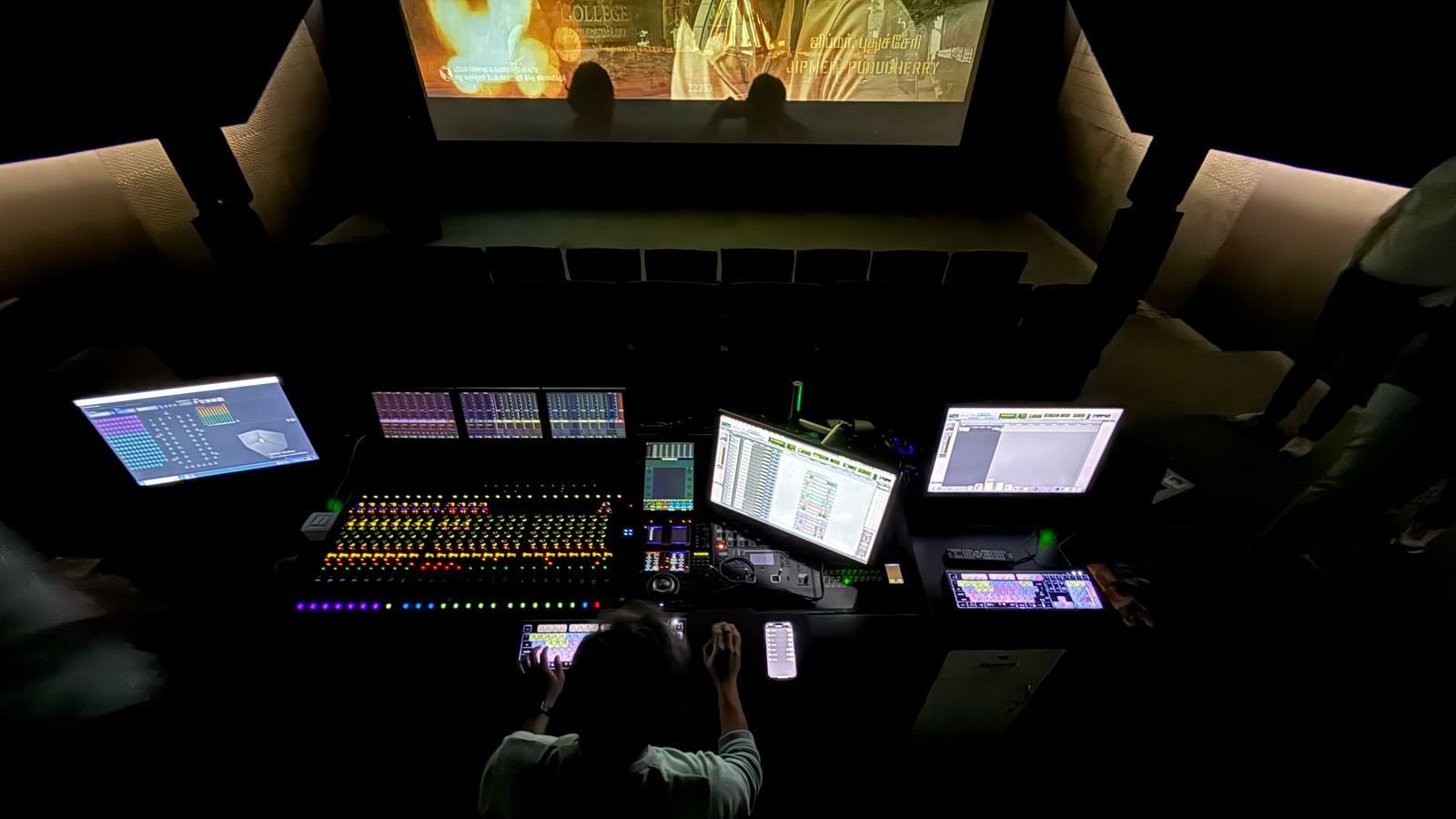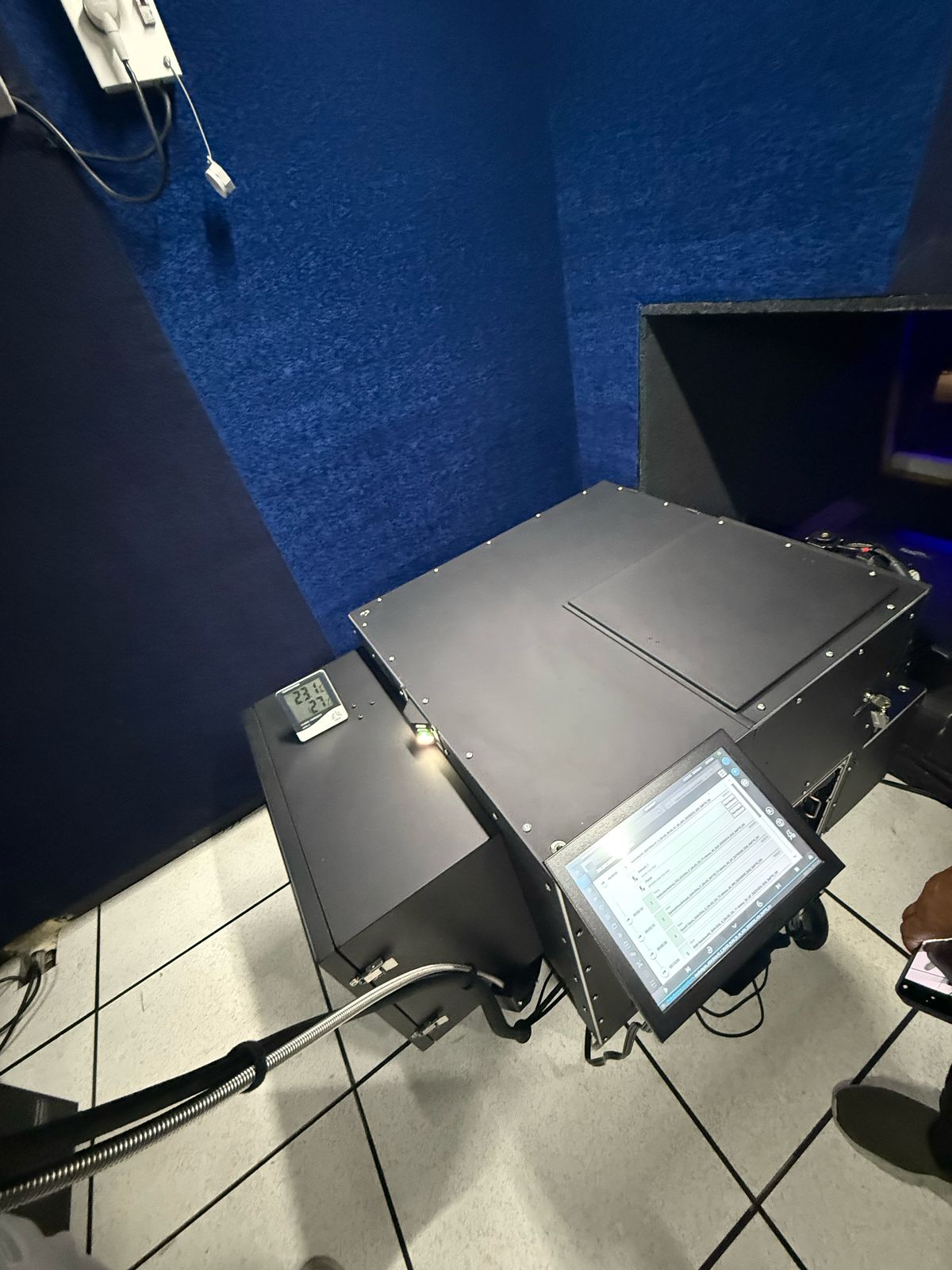India’s first Dolby Vision cinema grading facility hopes to make filmmakers see new opportunities | Technology News

In what was a snake-infested plot on the outskirts of Hyderabad half a century ago sprawls the Annapurna Studios. It is here that Indian cinema literally finds its cutting edge. And that is not just because most of RRR, Bahubali, and Pushpa were mixed here. The studio also houses the country’s first Dolby Vision post-production facility for cinema, augmenting the state-of-the-art Dolby Atmos mix rooms, thus giving a new tool to Indian filmmakers.
The facility houses the state-of-the-art Dolby Vision projection system developed by Dolby Laboratories in conjunction with Christie Digital so that filmmakers can experience the power of this innovative new format, which is already being adopted worldwide.
Nagarjuna and Ashim Mathur, Vice-President Marketing for APAC, Dolby Laboratories (from left to right). (Express Photo)
Ashim Mathur, Vice-President Marketing for APAC at Dolby Laboratories, explained they have an outreach program to take the word out on the new technology. “Hopefully, that will help us educate and get people in and they can start creating more content using Dolby Vision,” he told indianexpress.com. Mathur explained that the same process happened in the case of Dolby Atmos and then Atmos for Music, all of which needed a lot of work from their content teams with creators on the ground.
New movies like Pushpa 2 are already upscaled keeping a global audience in mind. But just processing the film in this new technology is not enough, Dolby Vision needs dual Christie 4K 6P modular laser projectors to ensure the complete experience. The Dolby Vision cinema projection is done in 108 nits at 12 bits, while for home it is at 1000 nits.
The Dolby Vision grading room at Annapurna Studios supports seamless workflows, helping bring in exceptional brightness, contrast, and colour depth which give new life to a director’s vision. Dolby Vision delivers a million-to-one contrast ratio, offering the brightest whites, the deepest blacks, and intricate details—from subtle reflections to hidden figures in the shadows. The facility already has a Dolby Atmos mixing room to help directors move audio objects in a three-dimensional space to aid their visual narrative.
 Dolby Vision projector at Annapurna Studios. (Express Photo)
Dolby Vision projector at Annapurna Studios. (Express Photo)
Asked if technologies like Dolby Vision can make filmmakers push the envelope on what they want to do, actor and Annapurna Studio co-owner Nagarjuna cited the example of Rajamouli who went to Germany even as Covid-19 lockdowns were still in place to mix RRR in Dolby Vision. “He is one person who pushed the limits… he went through iterations and corrections and he was learning on the run. It will make passionate filmmakers think that this can be done, and this can be achieved,” he explained. The unified post-production hub at Annapurna Studio brings advanced visual and audio technology under one roof, streamlining the post-production process.
“Dolby continues to push the boundaries of immersive storytelling by expanding its Dolby Vision and Dolby Atmos technologies across more platforms, including home entertainment and streaming. With its collaboration with Annapurna Studios, Dolby aims to further empower Indian filmmakers with advanced tools and workflows, ensuring Indian content competes on the global stage,” Mathur said.
Asked if the adoption of such new technologies was better in the south, Nagarjuna quipped that it was only natural given that “50% of the world’s IT engineers came from here”. But on a serious note, he added: “I believe the directors and filmmakers here have the hunger to be better. They want to prove themselves better… originally, it was better than Bollywood, but now they are asking why can’t we do it… if they can break through why can’t we?”





